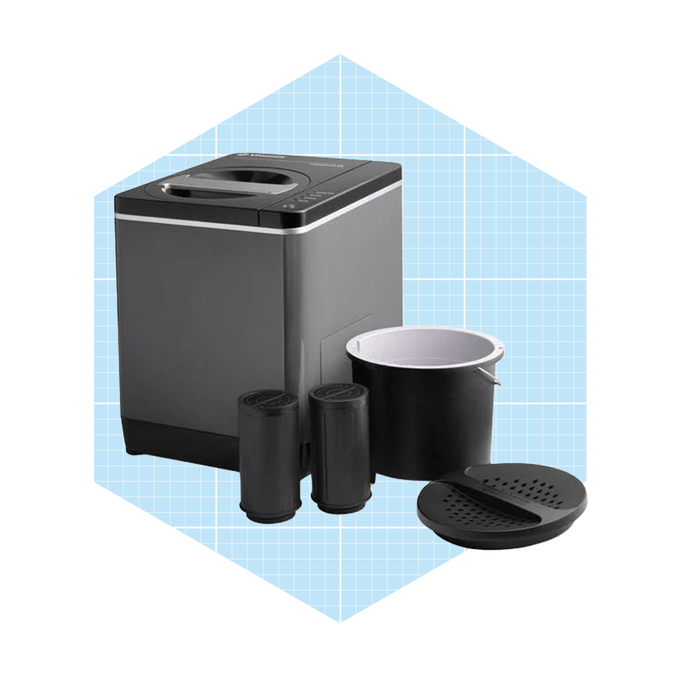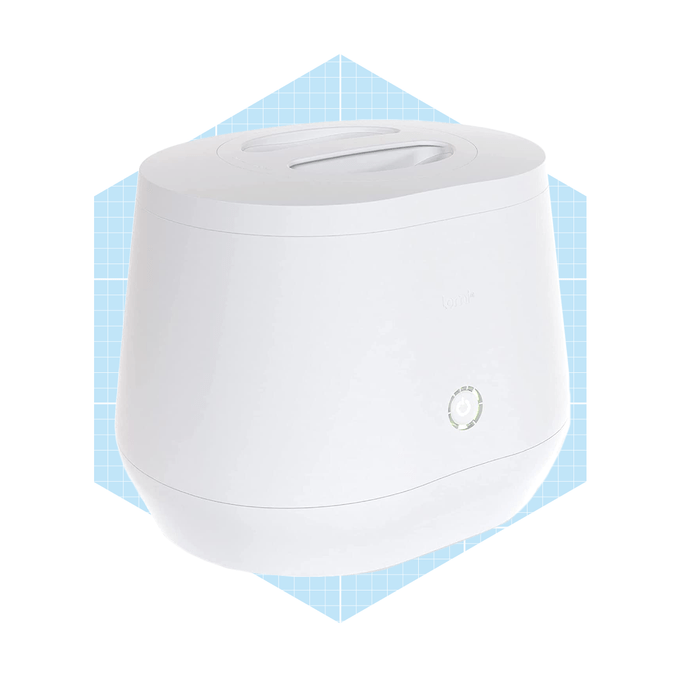How Electric Composters Work and Why They're Essential
Composting your kitchen waste has always been a good idea for gardeners who want healthy veggies and flowers, and making your own is better than buying it at a store, says gardening expert Lauren Click. “Homemade or locally made compost reduces the carbon footprint associated with transportation and ensures the compost is tailored to local soil needs…It maximizes sustainability and efficiency in nutrient recycling.”
With some communities now mandating the separation of food scraps from trash, it’s also a way to stay on the right side of the law. But if you’re an apartment dweller, you might not have space for a composter or a compost pile. Enter the electric composter.
What Is an Electric Composter?
An electric composter is a kitchen appliance that can be small enough for a countertop or as large as a garbage can. Also known as a food recycler, it reduces food waste to a dry, soil-like substance that you can safely add to your garden, and it does this in a matter of hours, not months. Plus, unlike a regular composter, an electric composter does its job while controlling methane gas emissions and odors and without attracting flies.
Electric composters are fairly new, and performance varies from model to model. The quality of the resulting compost also varies, with only a few models producing a nutrient-rich soil amendment. Others produce nutrient-deficient, dehydrated food chips that are better as mulch than fertilizer.
How do you use an electric composter?
You use one like a regular compost pail: Open the lid, drop in the food, press a button and the composter does the rest. The composting cycle takes five to 48 hours, depending on model. Then you retrieve the dehydrated product from a drawer at the base of the machine and spread it in the garden.
Many companies producing electric composters are startups in the crowdfunding stage, but there are some well-reviewed brands on the market. With prices from $400 to more than $1,000, the decision to experiment with electric composting doesn’t come cheaply.
How Do Electric Composters Work?
Electric composters generally process food scraps in three stages:
- First, the device heats the scraps to a temperature of about 160 degrees, which kills pathogens and weed seeds. Heating continues until the food is completely desiccated.
- Then it’s ground up into granules.
- Finally, the compost cools before you remove it from the appliance.
Some electric composters tumble the food waste as it’s being heated it so it dries faster. Others offer separate compartments for the three stages, so you can add more scraps while the unit is already working on a batch. Still others feature more than one composting mode to process meat and some plant-based plastics as well as vegetable matter.
Most electric composters pass the air released in the drying process through a carbon filter that removes atmospheric pollutants and odors. An entire cycle typically consumes about 1- to 1.5-kWh of electricity, about the same as running an electric space heater for an hour.
The quality of the compost also varies. An organic starter should be added to the food scraps to produce soil-like compost that plants can use directly; some, but not all, manufacturers supply this. Without this starter, the final product is often devoid of nutrients but still suitable as mulch or filler.
Why Get an Electric Composter?
While some see an electric composter as unnecessary, others want one to keep food scraps out of the garbage. Alternative composting methods, including manual compost tumblers and worm composting, require daily attention and take a long time to work, especially if you keep adding new material.
The benefits of electric composters include:
- No odors
- Compact design
- Automatic operation
- Simple to use
- Pest-free
Before you buy, you should also weigh the drawbacks:
- Limited testing
- Increased energy costs
- They do take up space
How To Use an Electric Composter
The specific method of using an electric composter depends on the model, but a general procedure could be summarized as:
- Insert food.
- Press the start button. Some units start automatically, and some can be operated by an app on your mobile device.
- Retrieve the compost by pulling out a drawer or tray.
The instructions for the model you buy will specify what you can compost. Most units can handle vegetable matter, coffee grounds and even eggshells, but not all can handle meat. In any case, Click doesn’t recommend adding meat products to your compost because they increase the potential for odors, pests and pathogens.
Pro tip: Some models let you add more food before the end of the cycle, but not all do, so if you want this feature, be sure to check the product specs before you buy.
Best Electric Composters
A few electric composters have been around long enough to gain a following. Some of the top ones are:

Vitamix FoodCycler F-50
The Vitamix FoodCycler F-50 is a countertop model with a healthy fan base. It’s about the size of an air fryer and takes four to eight hours to complete a cycle. Its carbon filtration system effectively eliminates odors, and it can handle most kitchen waste items, including chicken bones.

Pela Lomi
The Pela Lomi composter is also a countertop model that holds about 50 percent more material than the Vitamix. It offers three composting modes, the longest of which can even compost some types of plastic. The company also supplies Lomi Pods — organic starter material that makes the compost nutrient-rich.
Mill Food Recycler
As advertised on the manufacturer’s website, the Mill food recycler is a floor model that stands about three feet tall. With all that extra space, you can keep filling it for a month before you have to empty it. Even better, the unit runs automatically, so you don’t even have to remember to turn it on.
FAQs
How noisy or smelly are electric composters?
Most electric composters have charcoal filters to absorb odors, so you shouldn’t notice any smells. As for noise, they produce less than a dishwasher or microwave, but they aren’t completely silent. You may hear some grinding noises as they process bones and other hard materials.
Do I need to empty an electric composter daily?
No. If you have a countertop model, you may have to empty it at intervals from three days to a week. Larger units that sit on the floor can handle more waste and require less frequent emptying. As mentioned above, the Mill Food Recycler (for example) only needs to be emptied once a month.
About the Expert
Lauren Click is a recognized leader in the composting and circular economy space. She is the founder of Let’s Go Compost, a national 501(c)(3) nonprofit.
Post a Comment for "How Electric Composters Work and Why They're Essential"
Post a Comment